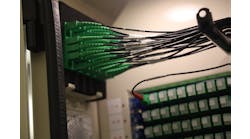Add to that the environmental, social and governance (ESG) initiatives, government mandates and attention on environmental protection and the result is that more corporations, communities and citizens are looking for ways to take responsibility for their energy.
The question is, how?
While every situation is unique, the path to accomplishing your goals for smarter energy is fairly straightforward.
A simplified approach to complex energy solutions
The most common concern organizations express regarding their sustainability projects is not knowing where to start. A good analogy is trying to figure out what one should plant in an empty yard. A landscape plan can provide the big picture and overall direction, enabling a phased approach to complete your goals.
EnTech Solutions created a step-by-step guide called the Path to Smarter Energy, which enables organizations to maximize energy results with minimal inconvenience. It uses prescribed steps to take you toward your energy goals, starting with assessment of your current and future needs and development of a plan. It then incorporates energy conservation and generation strategies and, finally, continued optimization.
Each step provides the building blocks to create personalized options that align with your financial, operational and environmental needs and goals.
Step 1: Energy usage assessment
First, you must assess where you are on your energy journey. Perhaps you’ve made some attempts at improving your energy consumption but don’t have a cohesive plan to scale your efforts. Or maybe you don’t know where you stand at all. Gathering data to understand your energy usage helps identify opportunities for improvement, enabling you to track changes over time to quantify the results of your activities. The information gathered during step one is critical to the success of your overall sustainability program. Without it, the other steps become significantly less impactful.
Step 2: Energy conservation
The data analysis often uncovers situations where energy is wasted, so the simplest first step is to consume less energy or to consume it at off-peak times. Incorporating building automation to monitor and control systems can support these efforts, enabling you to shut down nonessential systems while powering up other systems to avoid incurring overuse fees. The cost of these improvements is usually recovered relatively quickly in energy savings.
Step 3: Energy generation
Now that your operations are energy efficient, it’s time to look at where that energy comes from. Is it reliable? Affordable? Could you reach your sustainability goals faster or more cost-effectively by producing some or all of your energy via renewable sources like wind or solar? New technologies like electric vehicles could create an unprecedented additional demand for electricity that may overtax the existing grid. Distributed energy resources can enable you to generate energy for your organization using localized microgrids.
Step 4: Energy storage and independence
Battery storage for generated energy becomes a key component in a phased approach to smarter energy. Incorporating battery storage systems can provide energy independence, creating reliable and resilient energy for uninterrupted business operations.
A proven process that gets results
The path to smarter energy is a journey, not a destination. It’s important to recheck data, continue to adjust course and optimize operational performance. This proven process ensures nothing gets missed while the organization’s priorities can determine the best solution for them.
There are three essential pillars that affect decision making and design as we strive for smarter energy. Organizations can prioritize their own mix of these three to find a personalized solution:
- Most reliable.
- Least expensive.
- Highest value – can include focus on carbon intensity scores and ESG initiatives.
While the Path to Smarter Energy is a process that provides direction, these factors prescribe the final solution. Oftentimes, the steps taken are not just good for the environment; they are also good for business, providing a business case for achieving sustainability goals, showing a clear return on investment and financial viability that make smarter energy your smartest business strategy.
Dan Nordloh is senior vice president and general manager at EnTech Solutions.








